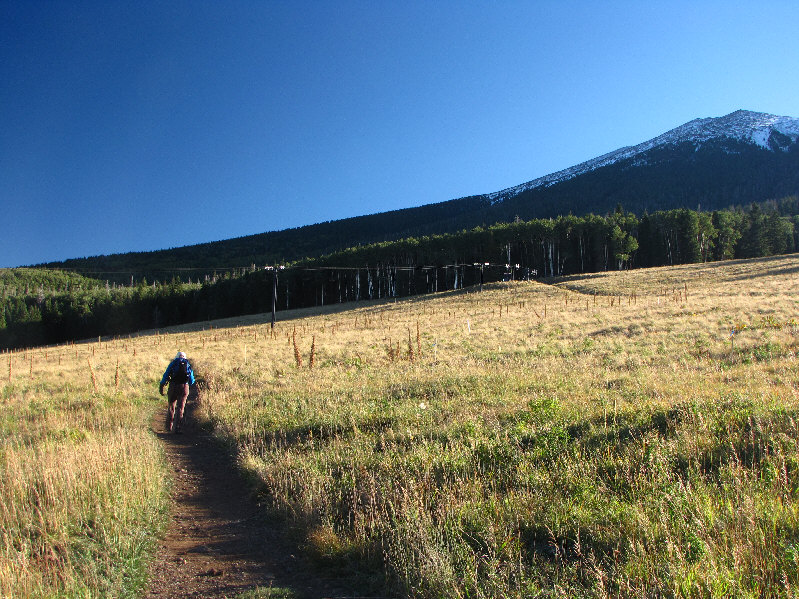
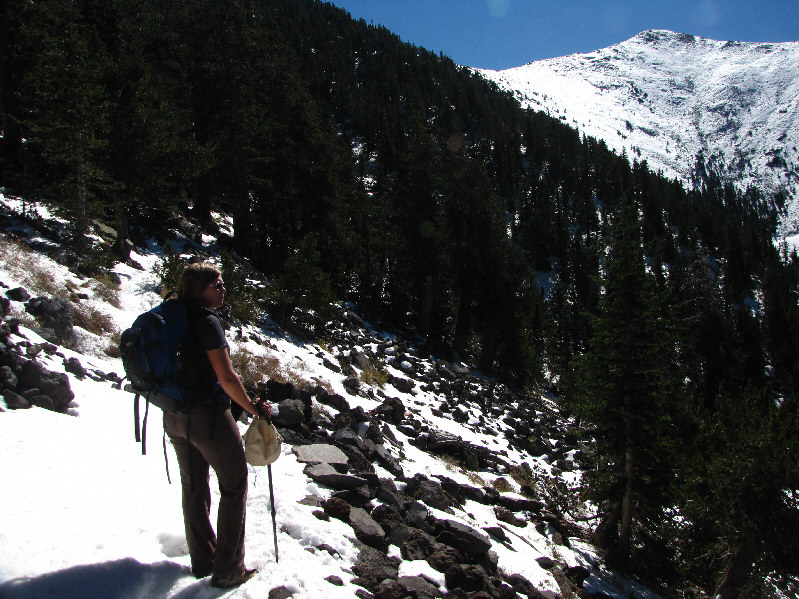
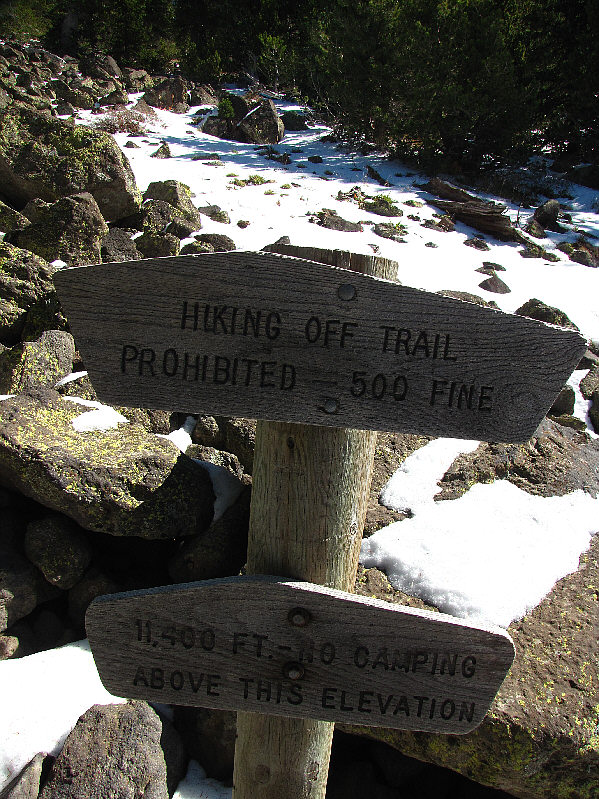
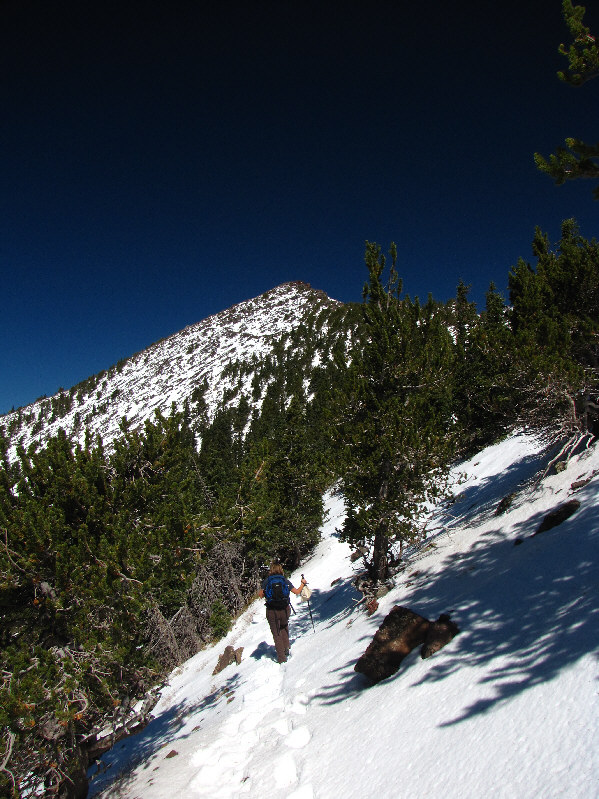
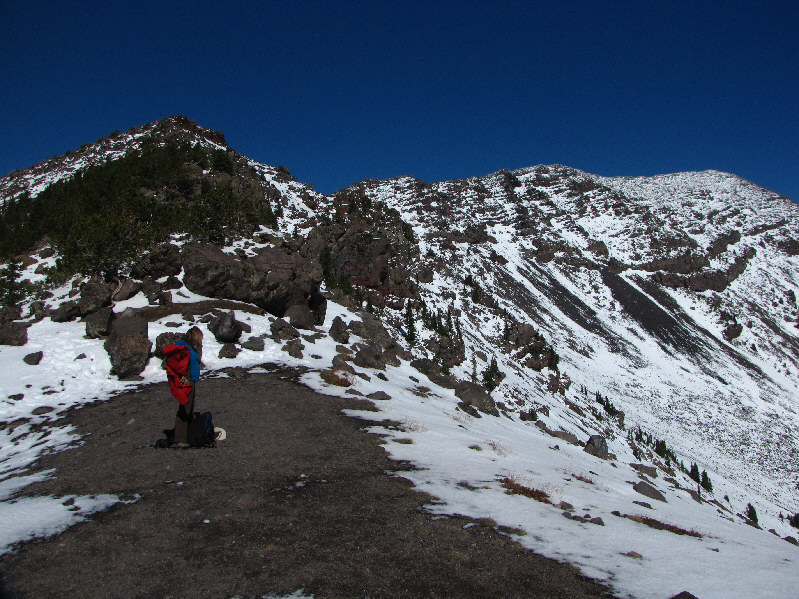
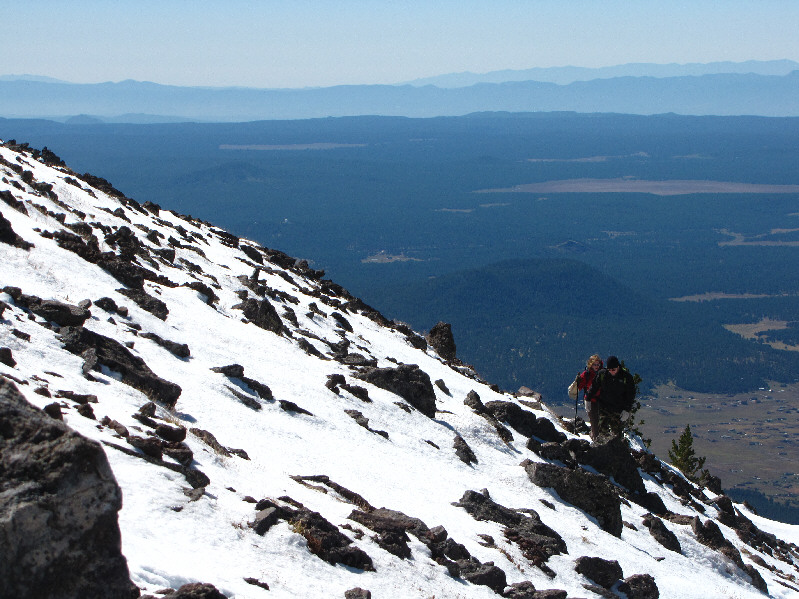
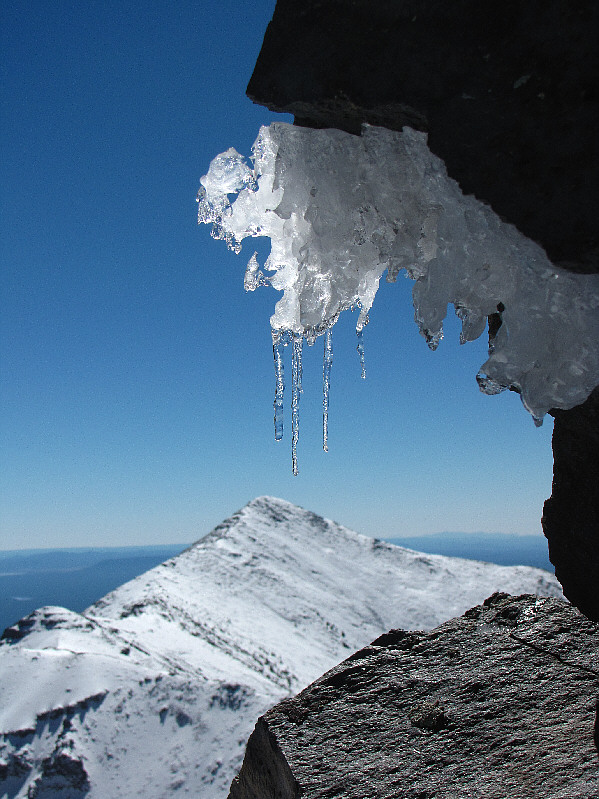
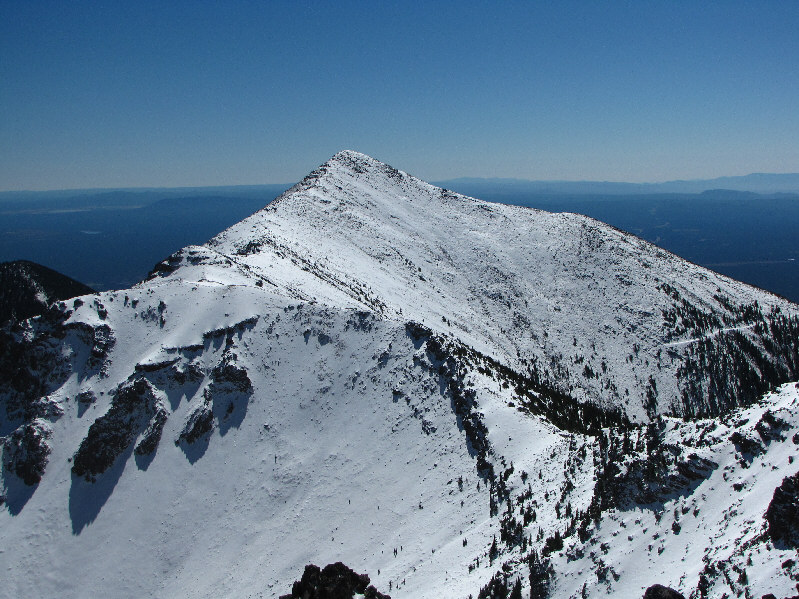
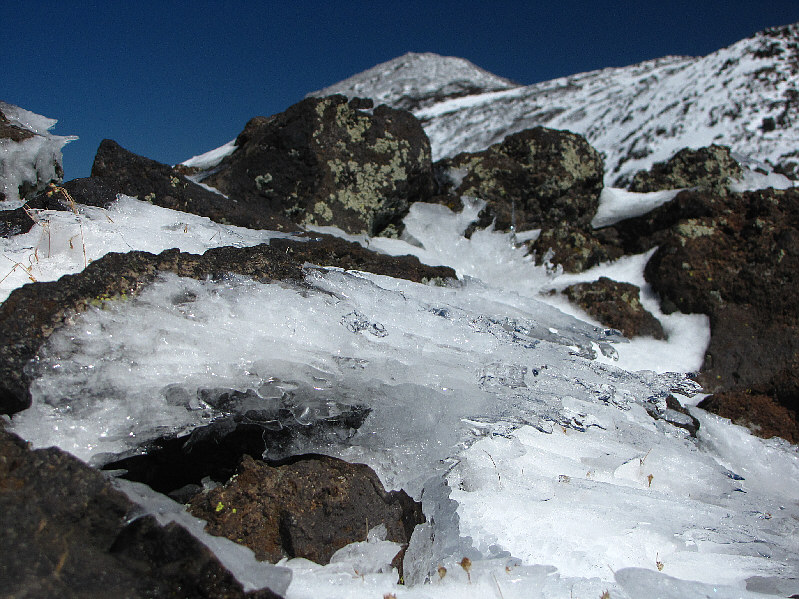
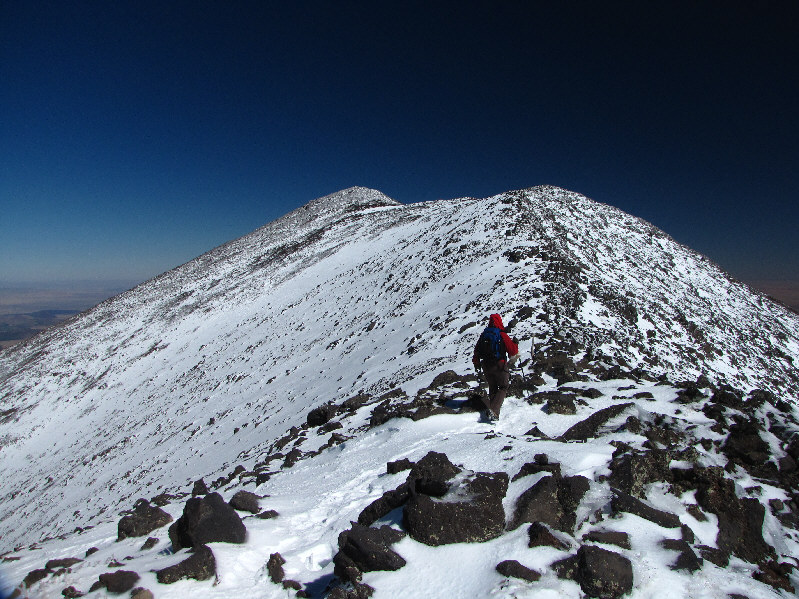
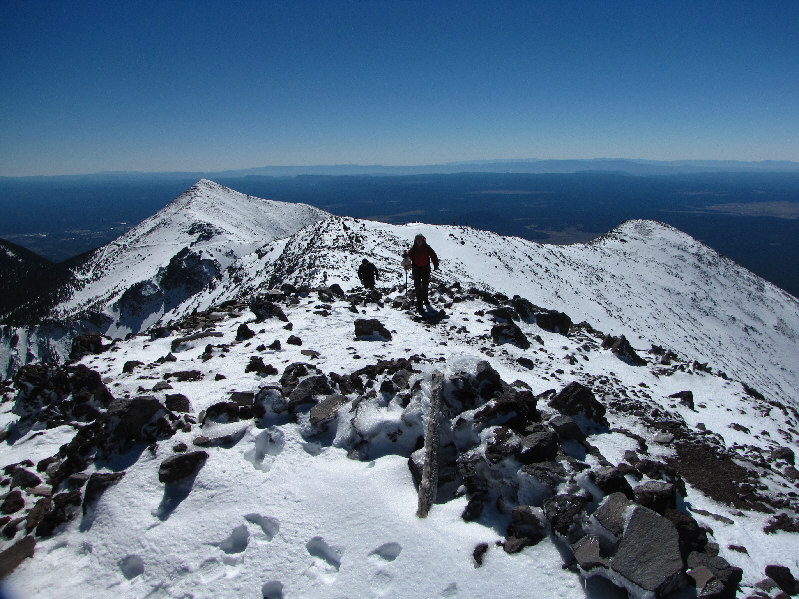
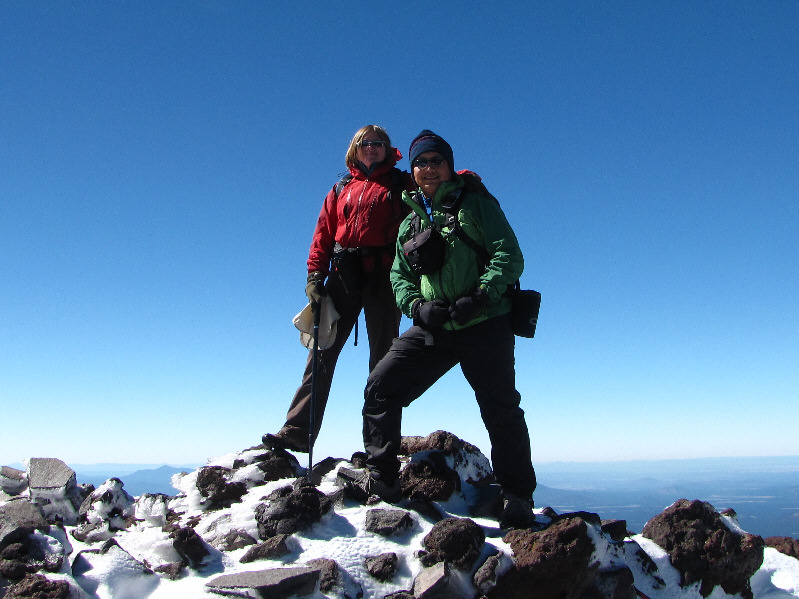
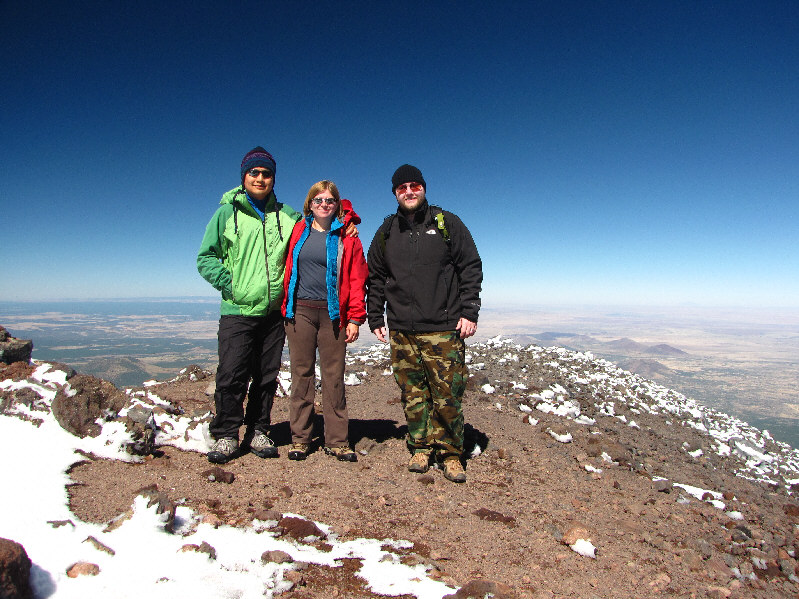
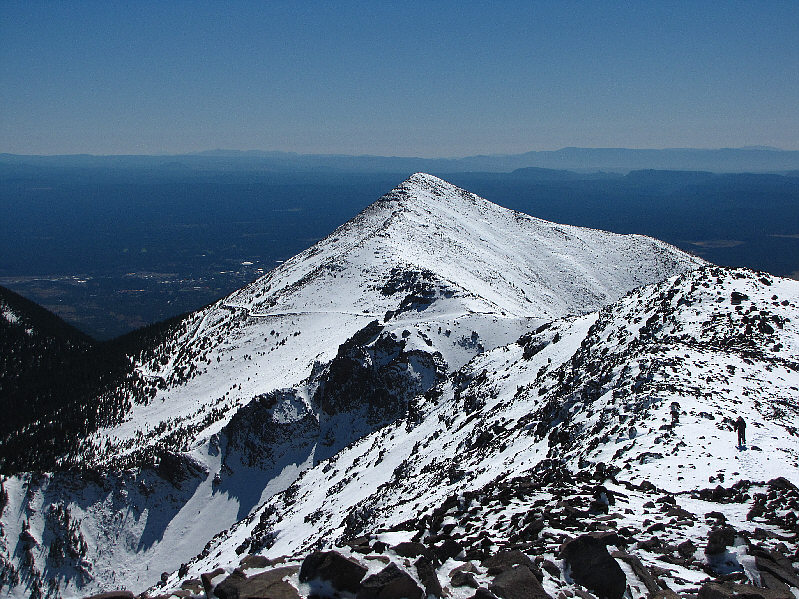
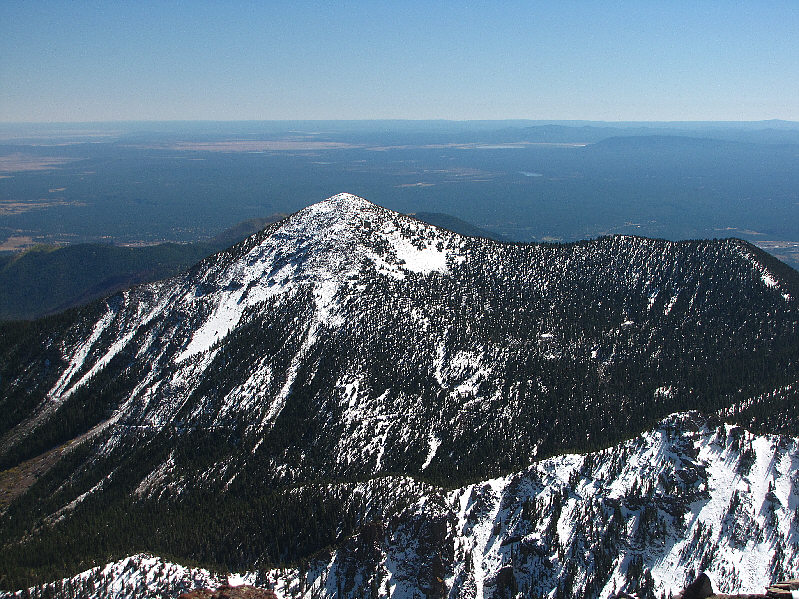
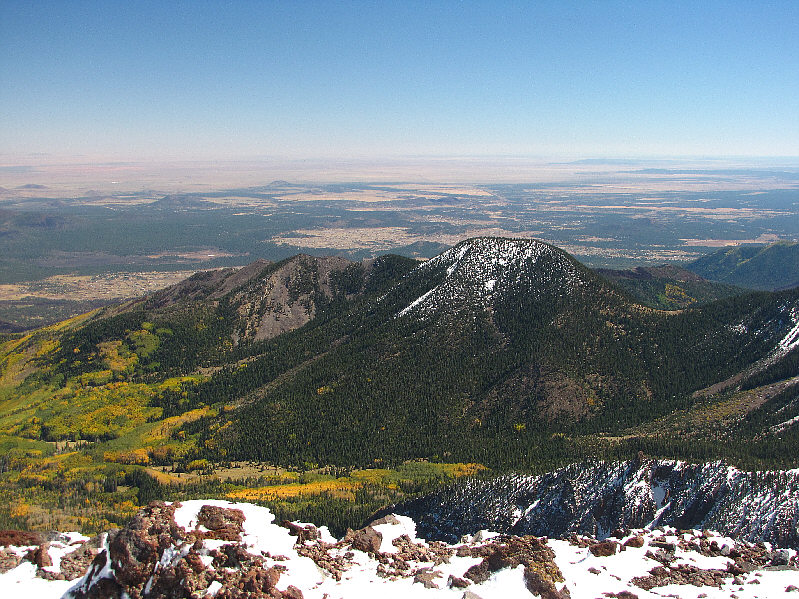
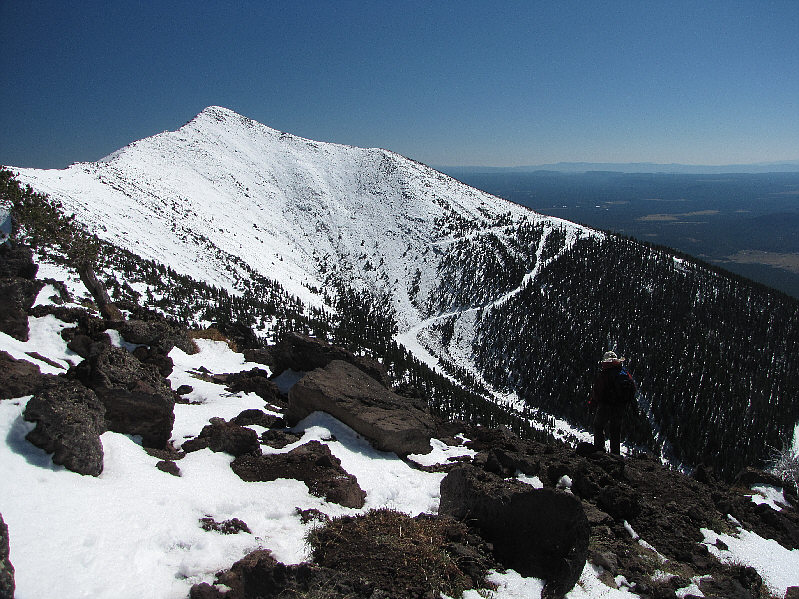
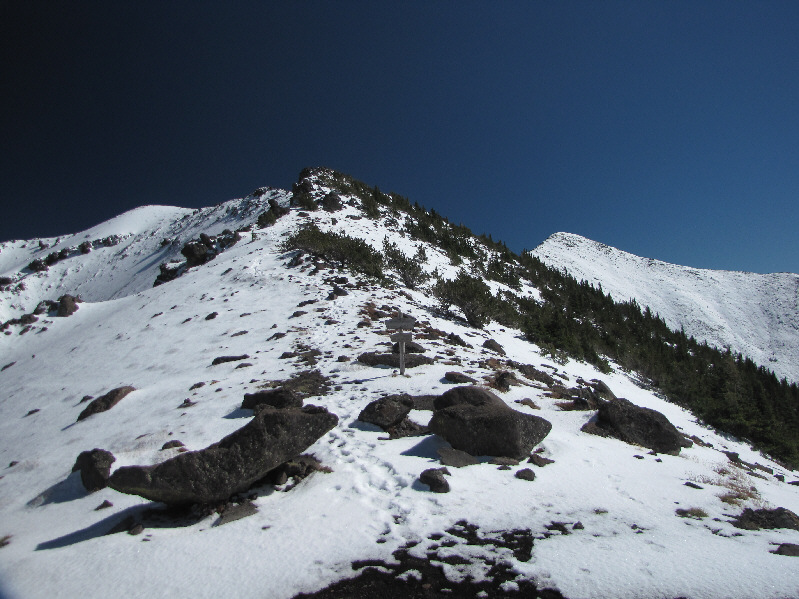
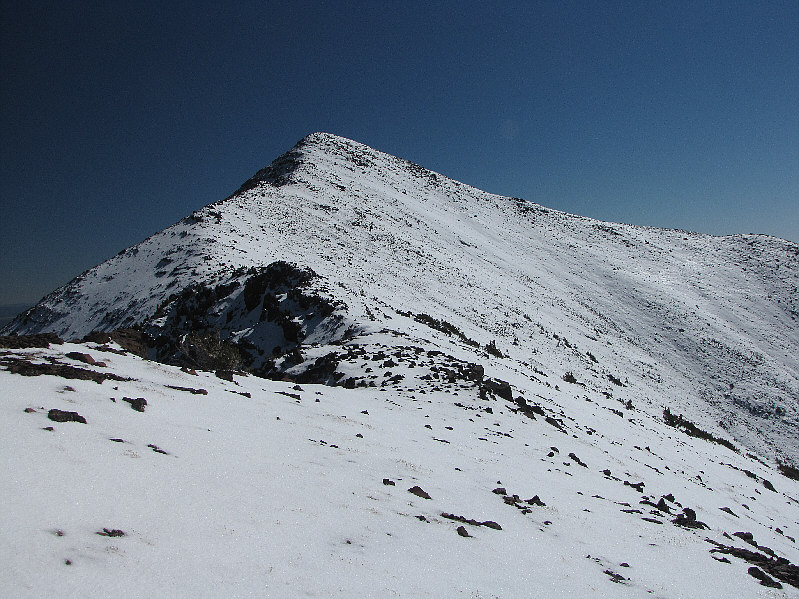
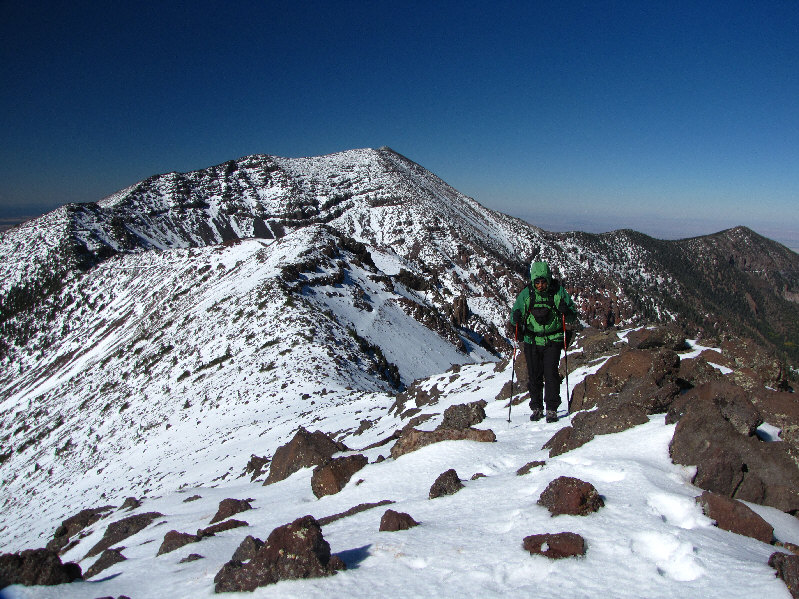
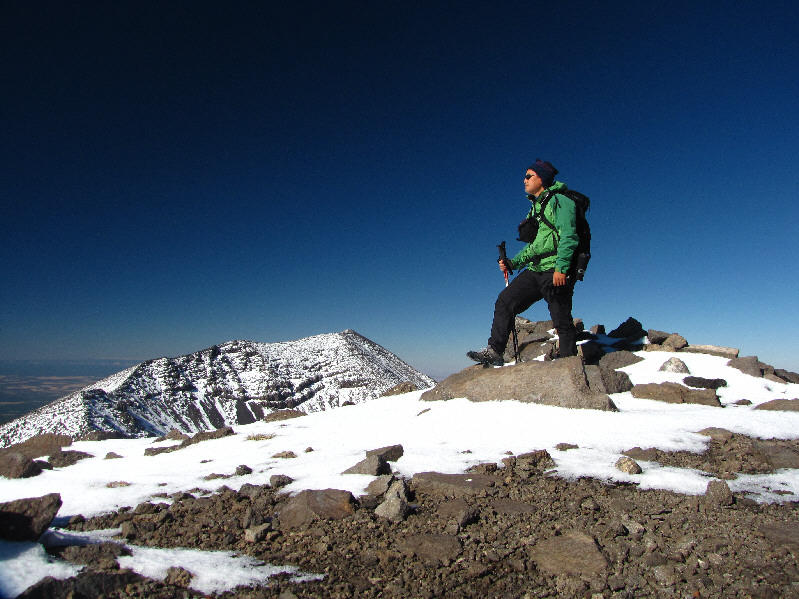
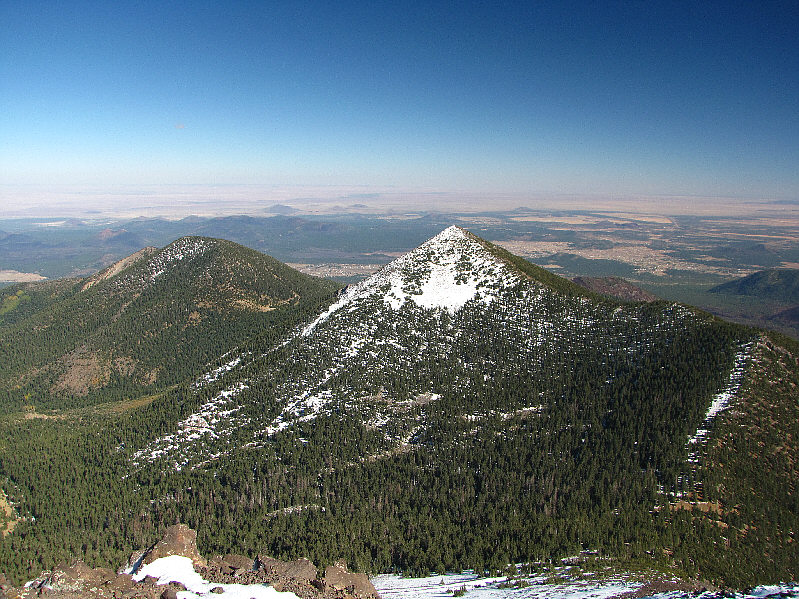
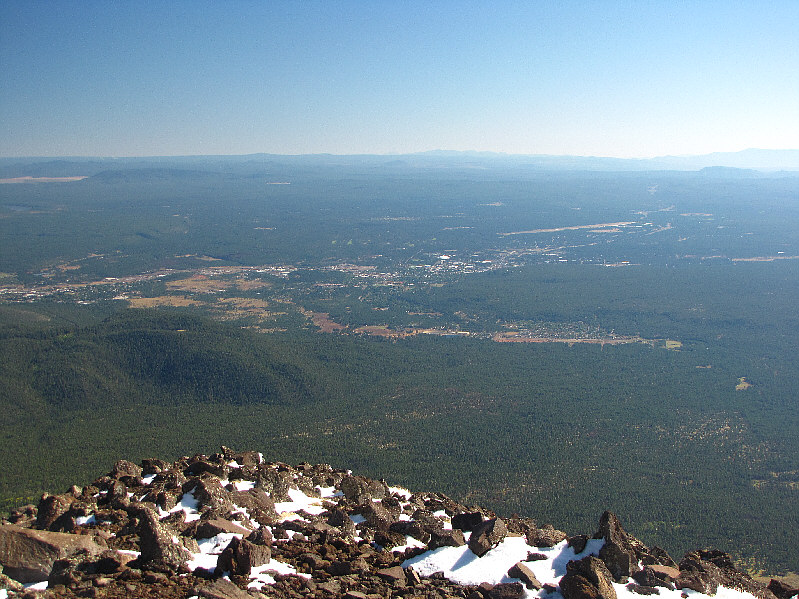
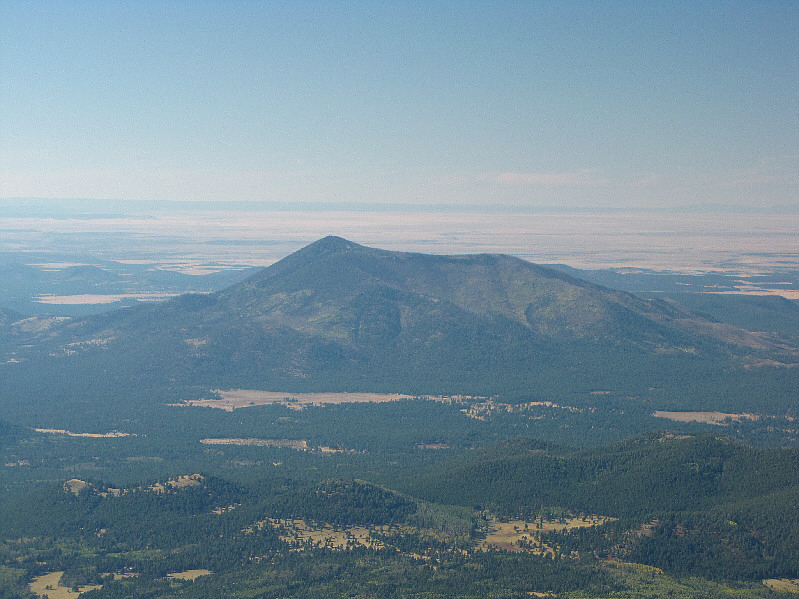
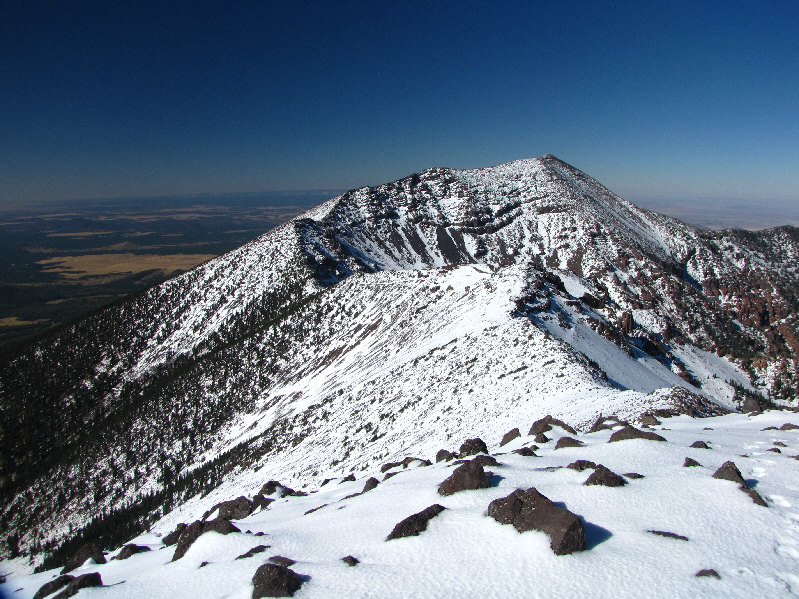
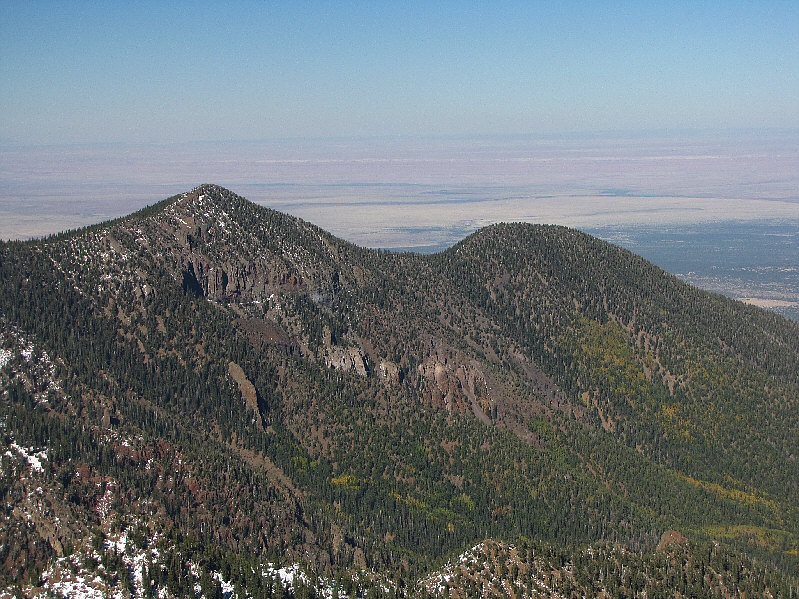
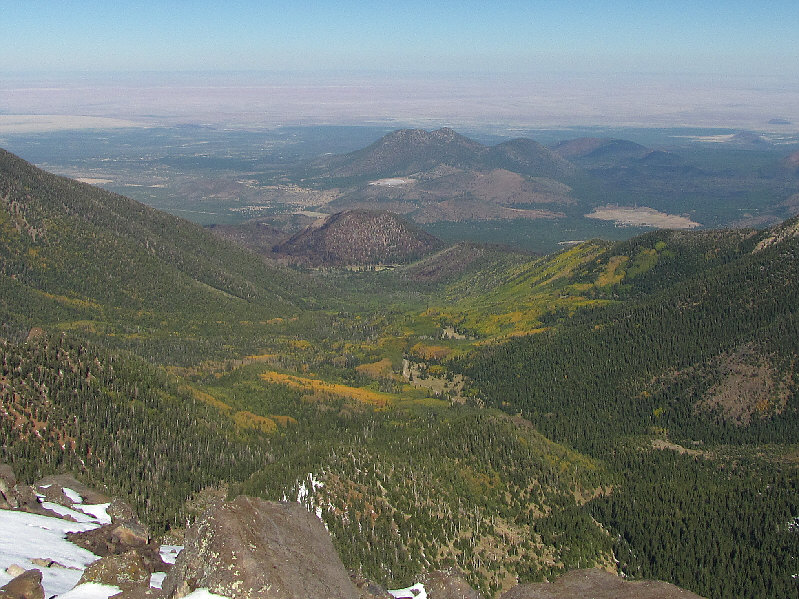
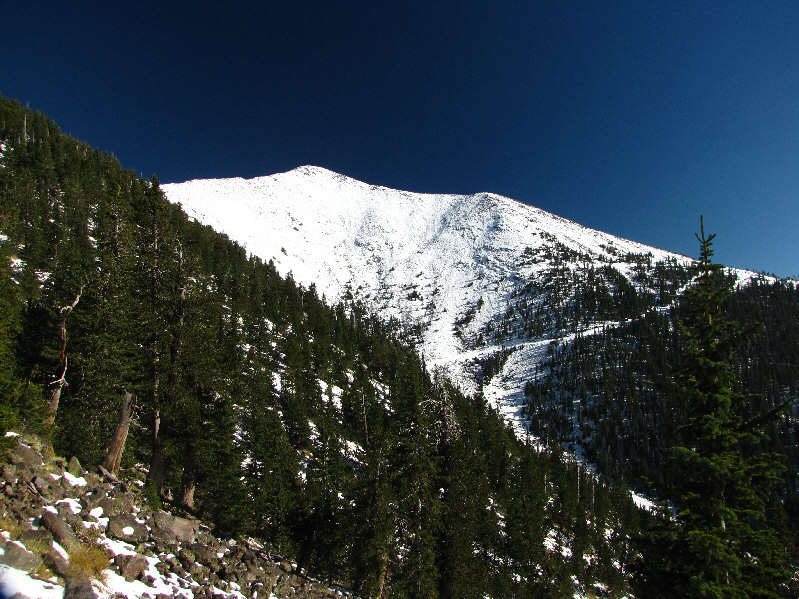
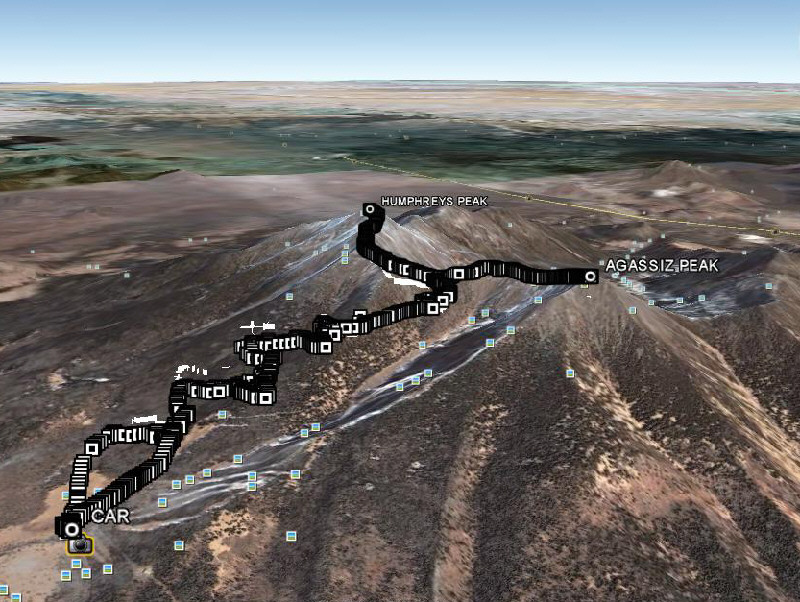
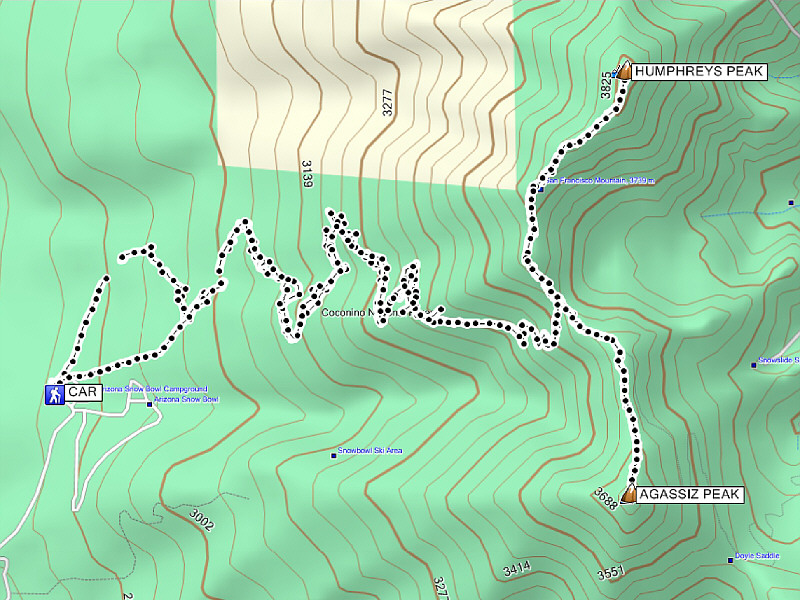
Round-Trip Time: 9 hours
Total Elevation Gain: 1251 metres
While Humphreys Peak has an official trail that runs all the way to its summit, Arizona's only other 12,000-footer, nearby Agassiz Peak, is normally off-limits to hikers due to the presence of an endangered plant known as the San Francisco Peaks groundsel (Senecio franciscanus). How the US Forest Service deems it okay to trample this perennial on one mountain but not another is baffling enough, but the fact that they also lease the slopes of Agassiz Peak to the Arizona Snowbowl ski resort makes the hiking restriction seem like a farce (there are also ongoing controversies regarding the ski resort's plans to expand and to make artificial snow using treated wastewater). That being said, several Internet sources state that climbing Agassiz Peak is permitted if it is covered with snow. I carefully considered this while studying Agassiz Peak on my way back to the col with Kelly and Guy.
From the col, Kelly and Guy continued hiking down the trail while I
set off alone up the north ridge of Agassiz Peak. During my ascent,
I made a conscious effort to stay mostly on snow or rock and to avoid
stepping on any vegetation (at the time, I was not even sure what the
groundsel looked like). A few sections of wind-blown, hard-packed
snow brought back some unpleasant memories from
Mount
Kidd South Peak, but otherwise, I reached the summit without too much
trouble. After a brief stay, I quickly retraced my steps to the col
and settled into a long but generally uneventful descent back to my car.
The trail was busier in the afternoon, and I was surprised to see so many
hikers still going up given the lateness of the day. I
wondered if some of them would even make it past tree line before sunset.
After returning to our hotel and getting cleaned up, Kelly and I headed
to the Bigfoot Bar-B-Q
restaurant in downtown Flagstaff for dinner and coincidentally ran into
Guy there. It was a great way to end a fabulous day of hiking in
Arizona.